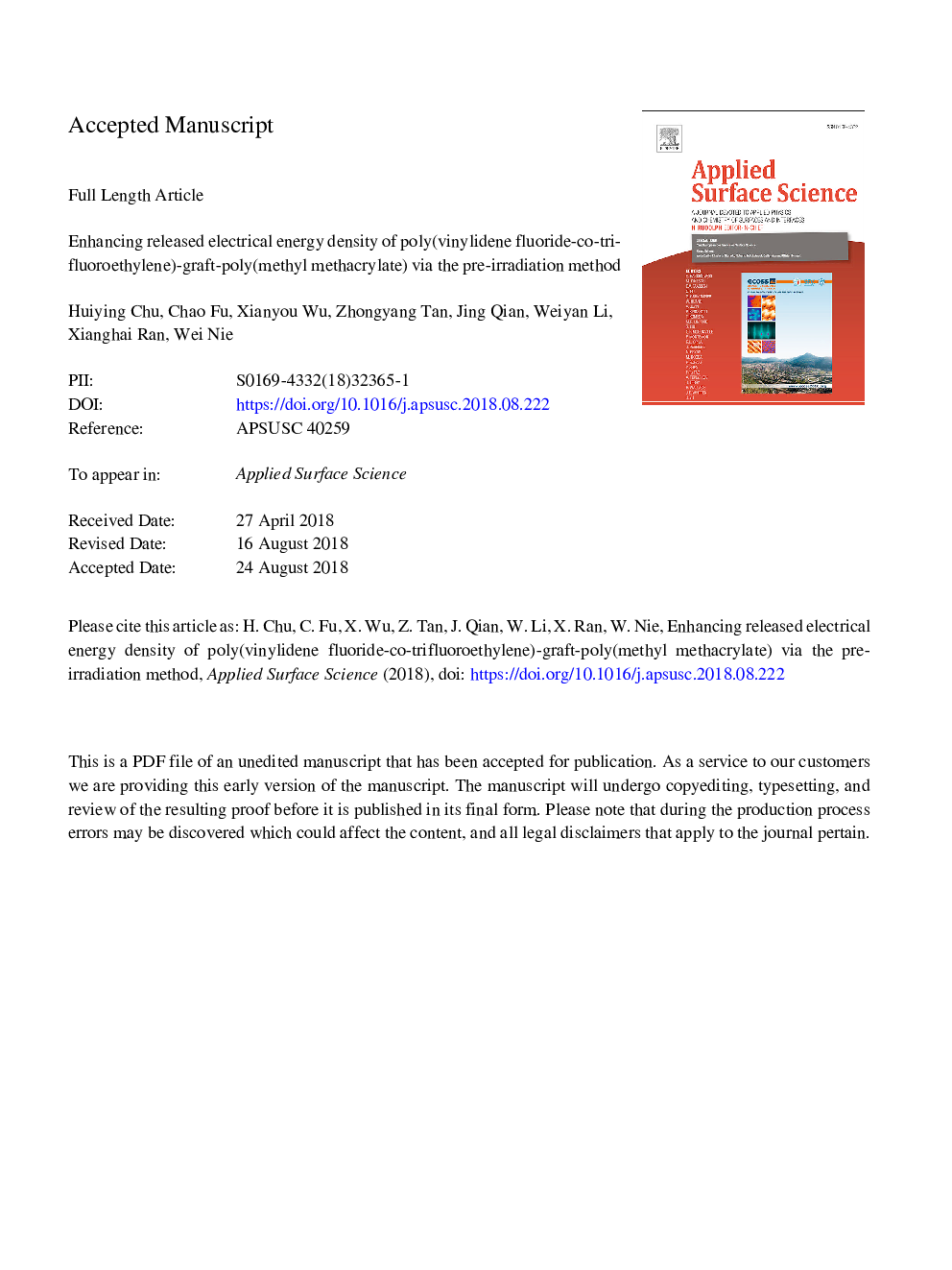| Article ID | Journal | Published Year | Pages | File Type |
|---|---|---|---|---|
| 11027003 | Applied Surface Science | 2019 | 32 Pages |
Abstract
Poly(vinylidene fluoride) (PVDF)-based ferroelectric polymers with excellent flexibility and tuneable ferroelectric performance characteristics have attracted continuous attention for high energy storage applications. To produce ideal novel ferroelectric polymers to enhance released energy density and reduced hysteresis loss, smaller ferroelectric domains are necessary. In this study, we prepared poly(vinylidene fluoride-co-trifluoroethylene)-graft-poly(methyl methacrylate) (P(VDF-TrFE)-g-PMMA) graft copolymers via the pre-irradiation process, achieving the transition from normal ferroelectric performance to either antiferroelectric-like or linear behaviour. Compared to the atom transfer radical polymerization (ATRP), this method is attractive due to its unique merits, such as user-friendly control, short processing time and catalyst-free reaction. By using the nanoconfinement effect concept, grafted-PMMA with fairly strong intermolecular interactions was miscible with P(VDF-TrFE) in an amorphous phase, which effectively impeded the formation of large lamellar crystals. Compared to pristine film, the best performance was achieved for the irradiated grafting film with dielectric loss reduced by 67% (from 0.27 to 0.09) at 1â¯MHz, released energy density increased by 77% (from 2.2 to 9.5â¯J/cm3) and released energy efficiency improved by 80% (from 0.15 to 0.75â¯J/cm3). This work provides a simple and efficient strategy for the fabrication of novel dielectrics for high released energy density and low loss application.
Keywords
Related Topics
Physical Sciences and Engineering
Chemistry
Physical and Theoretical Chemistry
Authors
Huiying Chu, Chao Fu, Xianyou Wu, Zhongyang Tan, Jing Qian, Weiyan Li, Xianghai Ran, Wei Nie,
